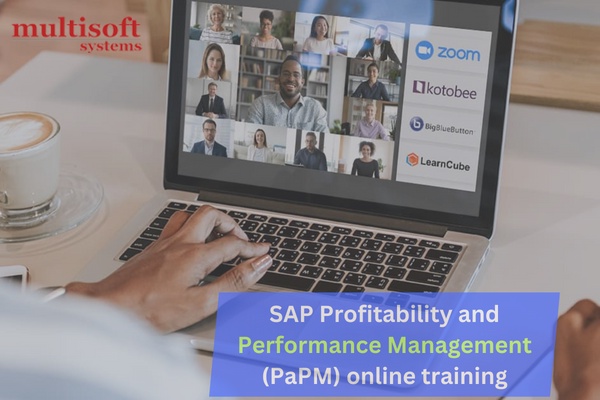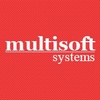The powerful tool that has gained significant traction for its ability to handle vast amounts of data and provide actionable insights is SAP Profitability and Performance Management (SAP PaPM). In the modern era of business, where data is considered the new gold, companies continuously seek efficient ways to manage, analyze, and leverage their data to make informed decisions.
This tutorial by Multisoft Systems aims to delve deep into SAP PaPM training, guiding you through its core features, benefits, and a step-by-step process to get started.
Introduction to SAP PaPM
SAP Profitability and Performance Management (PaPM) is a state-of-the-art application that enables businesses to analyze and optimize their profitability and performance in real time. Built on SAP's HANA platform, it leverages in-memory computing to process large volumes of data at unprecedented speeds. PaPM is designed to help organizations manage their financial performance more effectively by providing detailed insights into costs, revenues, and profitability across various dimensions such as products, customers, and channels.
Key Features
Real-time Data Processing: Leveraging SAP HANA's in-memory technology, PaPM processes vast amounts of data in real-time, ensuring that businesses have access to up-to-date information.
Flexible Data Modeling: Users can create custom models without the need for extensive IT involvement, making it easier to adapt to changing business needs.
Advanced Analytics: PaPM includes tools for predictive analytics, simulation, and what-if analyses, allowing businesses to forecast future performance and make informed decisions.
Integration Capabilities: It seamlessly integrates with other SAP solutions and external systems, ensuring a unified view of the business.
Benefits
Enhanced Decision Making: By providing detailed insights into profitability and performance, PaPM helps businesses make more informed decisions.
Increased Efficiency: Automates complex calculations and processes, saving time and reducing the risk of errors.
Improved Profitability: Identifies profit leakage points and opportunities for cost reduction, directly impacting the bottom line.
Scalability: Adapts to the evolving needs of the business, capable of handling increasing volumes of data as the company grows.
Getting Started with SAP PaPM
Step 1: Installation and Setup
To begin with SAP PaPM, your organization must have SAP HANA installed as it is the foundational platform for PaPM. Once SAP HANA is set up, you can proceed with the installation of the SAP PaPM application. It is recommended to engage with SAP professionals or certified partners to ensure a smooth installation process.
Step 2: Data Integration
The next step involves integrating your data sources with SAP PaPM. PaPM can connect to various data sources, including other SAP applications, third-party systems, and databases. Establishing these connections is crucial for aggregating the data required for analysis and reporting.
Step 3: Modeling and Configuration
With your data integrated, you can start building models within PaPM. These models represent the various aspects of your business you wish to analyze, such as cost allocations, profitability analysis, or performance metrics. SAP PaPM provides a user-friendly interface for creating and configuring these models without extensive programming knowledge.
Step 4: Running Simulations and Analysis
Once your models are configured, you can begin running simulations and analyses. SAP PaPM allows you to perform what-if analyses to understand the potential impact of different scenarios on your profitability and performance. These insights can be invaluable in strategic planning and decision-making processes.
Step 5: Reporting and Visualization
The final step involves generating reports and visualizations based on the analysis. SAP PaPM offers a range of reporting and visualization tools that enable you to present your findings in a clear and compelling manner. These reports can be customized to meet the specific needs of your audience, whether it's the executive team, department heads, or external stakeholders.
Best Practices for SAP PaPM Implementation
Define Clear Objectives: Before implementing SAP PaPM, clearly define what you aim to achieve. Whether it's improving profit margins, reducing costs, or enhancing decision-making, having clear objectives will guide the implementation process.
Engage Stakeholders: Ensure that all relevant stakeholders, from IT to business users, are engaged in the process. Their input and buy-in are crucial for a successful implementation.
Invest in Training: SAP PaPM is a powerful tool, but its effectiveness is contingent on the users' ability to leverage its capabilities. Invest in comprehensive training for all users.
Start Small and Scale: Begin with a pilot project focusing on a specific area of your business. This approach allows you to learn and adjust before rolling out PaPM across the entire organization.
Leveraging SAP PaPM for Strategic Advantages
Organizations that successfully implement and leverage SAP PaPM certification can expect to achieve significant strategic advantages. By enabling more granular and accurate analysis of profitability and performance across various dimensions, companies can identify and capitalize on opportunities faster than their competitors.
Furthermore, the efficiency gains from automated processes and reduced reliance on IT for reporting and analysis free up valuable resources for strategic initiatives.
Overcoming Challenges & Innovations
While SAP PaPM online training offers numerous benefits, organizations may face challenges during its implementation, such as data quality issues, change management, and ensuring user adoption. Overcoming these challenges requires a focused approach, including thorough planning, stakeholder engagement, and continuous training and support for users. Additionally, leveraging the expertise of SAP consultants and partners can provide invaluable guidance and best practices tailored to your organization’s specific needs.
SAP is known for its commitment to innovation, and SAP PaPM is no exception. Future developments are likely to focus on enhancing the application's predictive analytics capabilities, integrating more advanced AI and ML technologies, and improving user experience through more intuitive interfaces and reporting tools. These innovations will enable organizations to not only react to changes in their business environment but also to anticipate them, ensuring sustained profitability and performance.
Conclusion
Multisoft Systems’ SAP Profitability and Performance Management (PaPM) online training is an invaluable tool for businesses looking to enhance their decision-making capabilities through detailed insights into profitability and performance. By following the steps outlined in this tutorial and adhering to best practices, organizations can effectively implement SAP PaPM and harness its full potential. As the business landscape continues to evolve, the ability to swiftly and accurately analyze performance data becomes ever more critical. SAP PaPM stands out as a solution capable of not just meeting but exceeding these analytical needs.


No comments yet